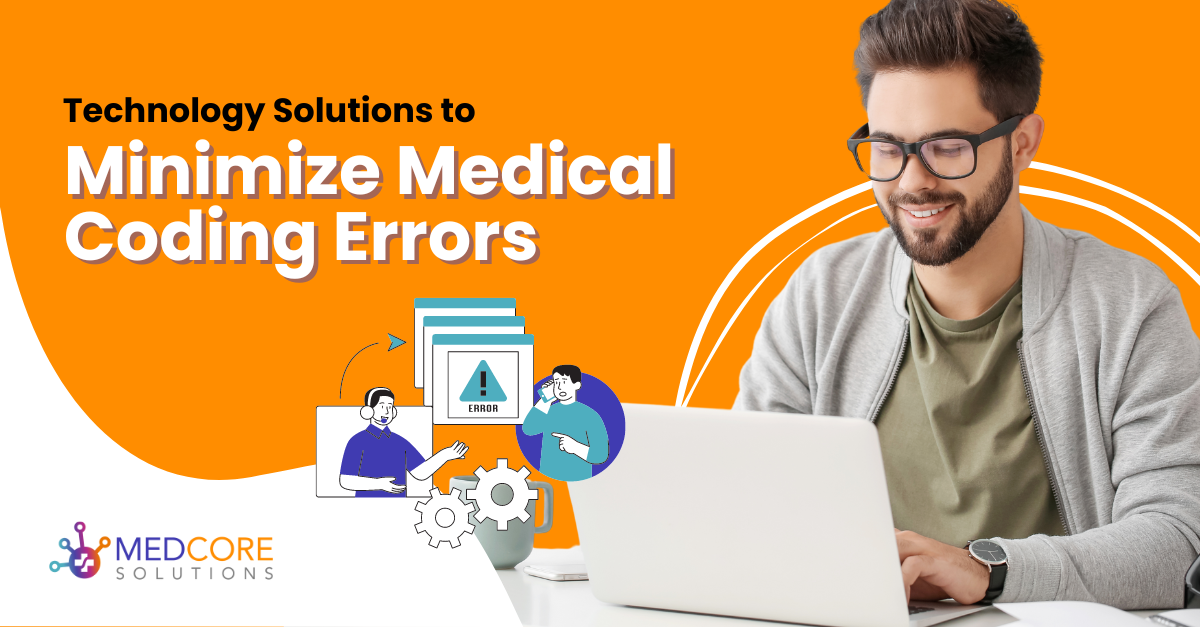Accurate coding ensures proper reimbursement, maintains compliance, and facilitates better communication among the healthcare team. However, the complexity of medical coding often leads to errors. In fact, based on the latest data available, it is approximated that 80% of medical invoices in the United States are inaccurate. Consequently, errors result in financial losses, compliance issues, and poor patient care. Fortunately, progress in technology now provides innovative solutions for healthcare efficiency and minimizes medical coding errors.
Medical coding errors cover a spectrum of issues. These issues range from simple typing mistakes to confusion on documentation and not enough training. Moreover, the results of these errors impact healthcare providers, payers, and patients alike. Inefficiencies in coding not only delay reimbursement but also hinder data analytics. Additionally, errors impede the ability to derive insights for quality improvement initiatives and clinical choices.
Technology Solutions You Need to Minimize Medical Coding Errors
To address these challenges, healthcare organizations are increasingly turning to solutions that are focused on technology. Here are several technologies changing the landscape of medical coding.
Natural Language Processing (NLP) and Machine Learning
NLP algorithms, fueled by machine learning, have the potential to improve medical coding by getting insights from clinical documents that aren’t organized. These algorithms can analyze physician notes, operative reports, and other textual data to automatically assign appropriate codes with higher accuracy and efficiency than manual coding processes. By using vast datasets, machine learning models will continue refining their coding accuracy. Thus, medical coding errors are also reduced.
Computer-Assisted Coding (CAC)
CAC delves into the details of patient encounters. Its systems can understand information and draw upon historical data to suggest the most appropriate codes. Therefore, this contextual understanding enables CAC algorithms to go through the complexities of medical terminology, diagnoses, and procedures. Significantly, the likelihood of medical coding errors is also reduced. Moreover, by learning from feedback and evolving datasets, CAC systems enhance their accuracy over time. This further supports coder productivity and confidence.
One of the most compelling features of CAC solutions is their ability to provide real-time feedback to clinicians at the point of care. By integrating seamlessly with clinical workflows, CAC systems offer immediate insights and recommendations. Therefore, clinicians can refine their documentation practices on the spot. This proactive approach fosters a culture of accuracy and compliance. Additionally, it allows easy collaboration between coders and clinicians, driving improvement in coding quality.
Furthermore, CAC solutions serve as important tools for clinical documentation improvement (CDI). They prompt clinicians to capture comprehensive and precise information during patient encounters. For instance, showing potential documentation gaps or inconsistencies will enable clinicians to capture a more accurate portrayal of patient care which is essential for optimal coding and billing accuracy.
Blockchain Technology
Blockchain’s immutable ledger capabilities offer promising solutions for boosting medical coding integrity and security. For instance, once data storage is decentralized and audit trails are transparent and tamper-proof, the risks of medical coding errors and fraudulent activities are reduced. Smart contracts powered by blockchain can automate coding-related transactions. Moreover, compliance with regulatory requirements is ensured.
Clinical Documentation Improvement (CDI) Tools

CDI tools empower healthcare professionals to capture comprehensive and accurate clinical documentation. It lays the foundation for precise medical coding. Moreover, these tools use AI-driven algorithms to analyze clinical narratives, identify potential documentation gaps, and provide real-time feedback to clinicians. By promoting detailed documentation practices, CDI tools not only reduce medical coding errors but also enhance the overall quality of patient records. Therefore, you get more organized and have better clinical outcomes with them.
Telemedicine and Remote Coding Solutions
The increase in telemedicine platforms has encouraged the adoption of remote coding solutions. Therefore, certified coders can work virtually anywhere. Moreover, these platforms allow secure remote access to EHR systems and telecommunication technologies. Thus, remote coding teams can efficiently process medical records. These solutions ensure timely and accurate coding without location-based constraints. To conclude, this decentralized approach to medical coding improves operational flexibility. Additionally, it also solves staffing shortages and gives the growth potential to healthcare organizations.
Interoperability Standards and Integration Platforms
Easy integration between different healthcare systems is essential for accurate and efficient medical coding. Integration platforms using standards such as Health Level Seven International (HL7) enable the exchange of clinical data across different electronic systems, helping the gathering of patient information for coding work. By bringing together data sources and eliminating silos, interoperability standards create simple coding tasks and reduce the likelihood of data differences or inconsistencies.
Data Analytics and Predictive Modeling
Data-driven insights derived from analytics and predictive modeling hold immense potential for improving medical coding processes. By studying historical coding trends, anomalies, and patterns, healthcare organizations can identify areas of improvement, use resources effectively, and anticipate coding challenges proactively. Predictive modeling techniques enable better risk management by predicting potential medical coding errors and applying preventive interventions to mitigate their impact.
For example, if certain procedures consistently result in coding errors, organizations can provide additional training or implement better process to mitigate these challenges.
Continuous Education and Training Platforms

Furthermore, ongoing education and training are essential to equip healthcare professionals with the knowledge and skills required for accurate medical coding. Technology-enabled learning platforms offer engaging modules, virtual models, and personalized training experiences compatible with the coders’ specific needs and expertise levels. These platforms use gamification, artificial intelligence, and augmented reality to enhance engagement and retention, promoting a culture of continuous learning and professional development within healthcare organizations.
Conclusion
As healthcare continues its digital transformation journey, the integration of technology solutions holds the promise of revolutionizing medical coding practices and minimizing errors. By embracing innovations such as NLP, CAC, blockchain, and telemedicine, healthcare organizations can enhance coding accuracy, streamline workflows, and ultimately improve patient outcomes. However, successful implementation requires a holistic approach encompassing technological investment, team collaboration, and a commitment to ongoing quality improvement. By harnessing the power of technology, we can unlock new opportunities to optimize healthcare delivery and pave the way for a more efficient healthcare ecosystem.
Ready to improve your medical coding practices and drive better patient outcomes? Partner with MedCore today to harness the power of technology and elevate your healthcare delivery to new heights. Let’s innovate together for a more efficient healthcare ecosystem. Contact us now to start your transformation journey! Click here.

